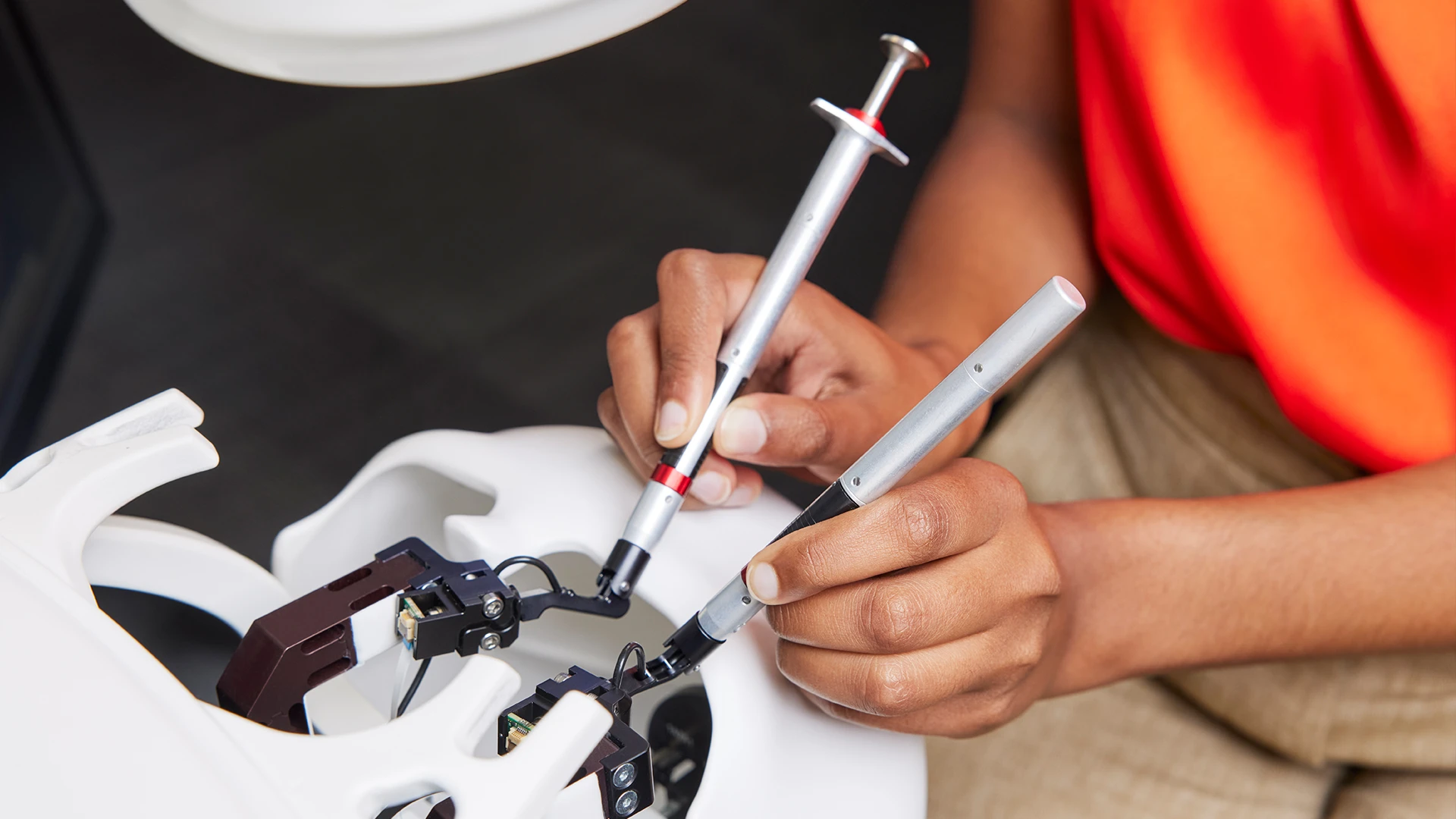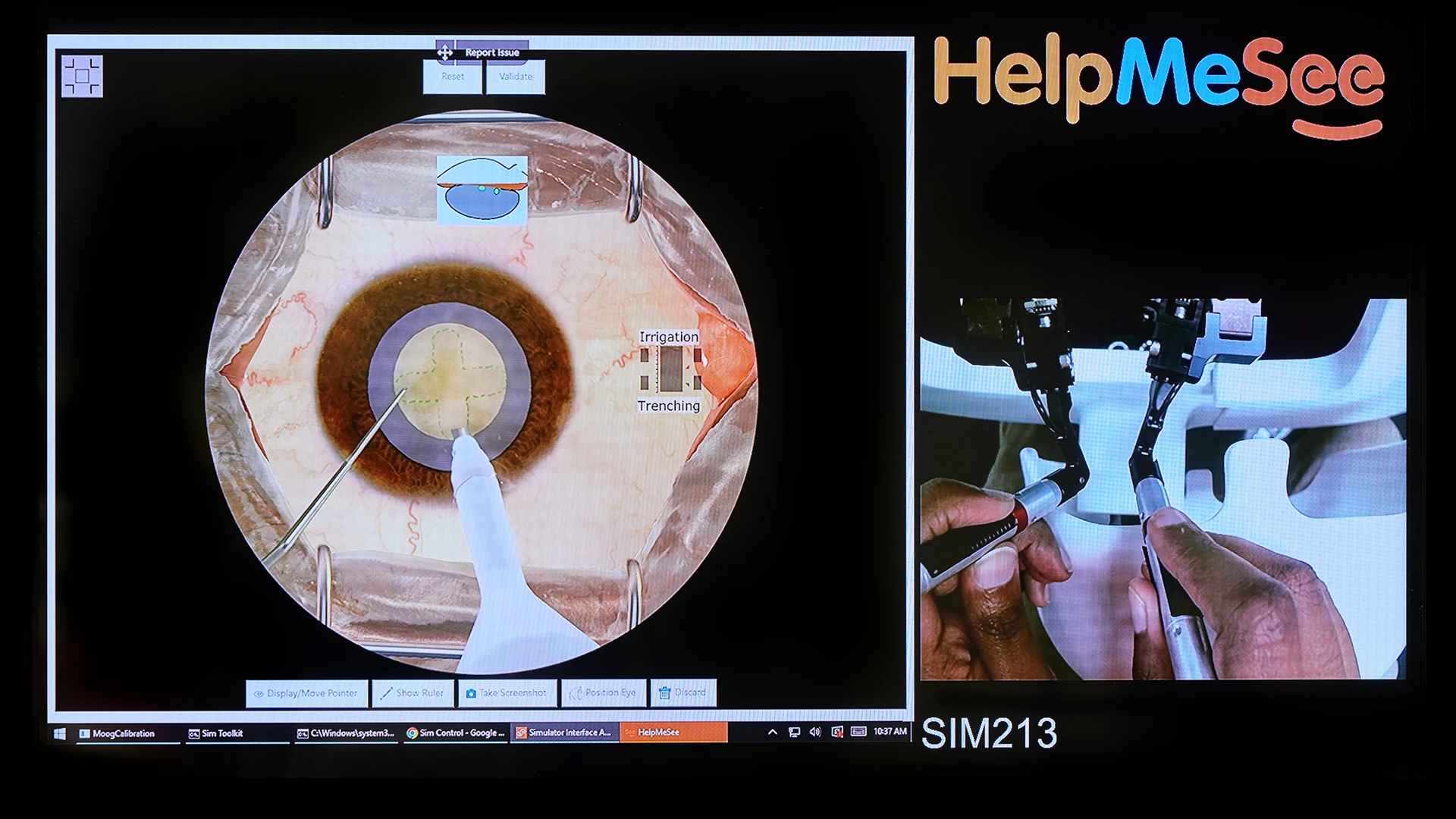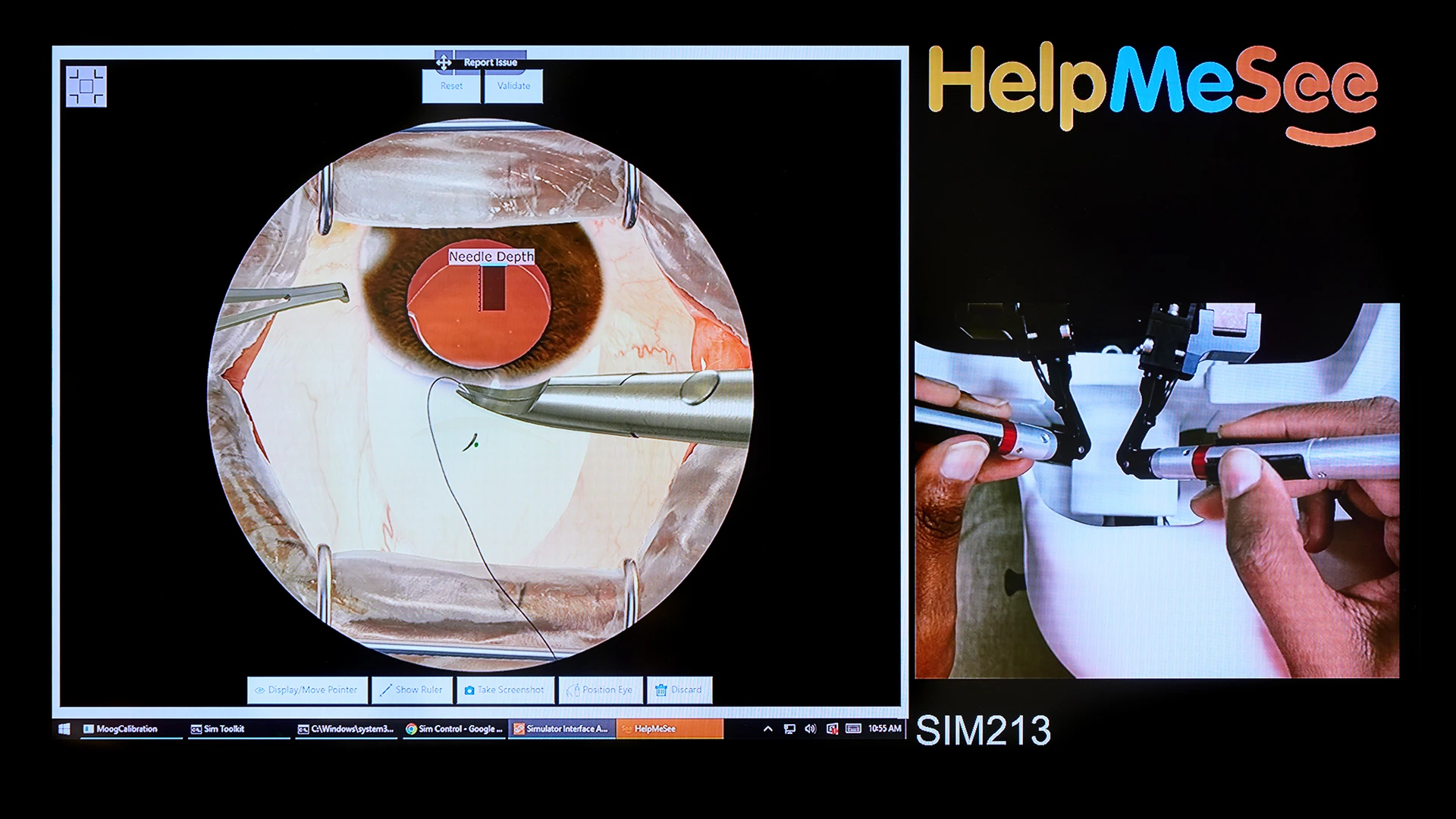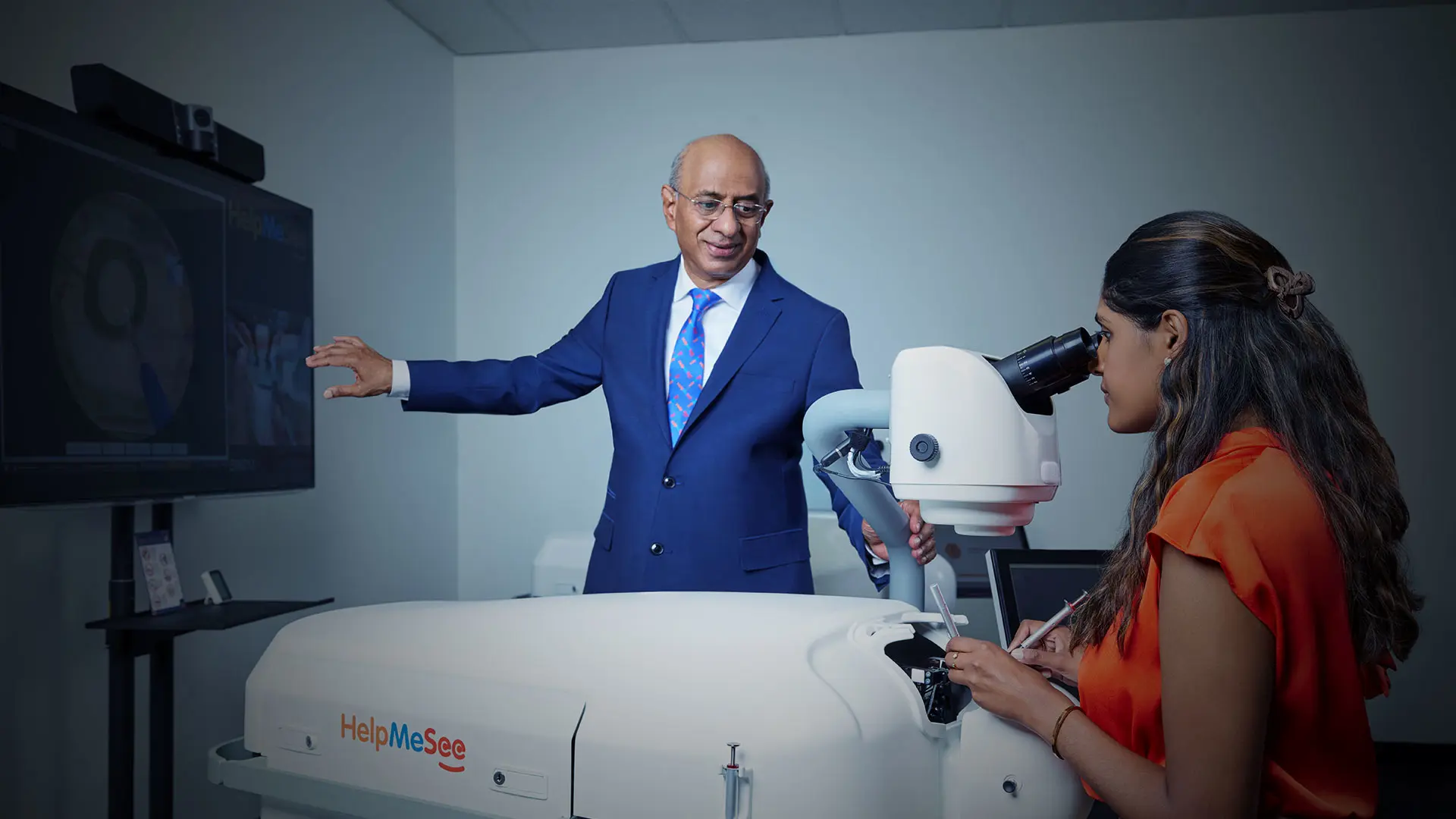No goal is more critical to surgical training at New York Eye and Ear Infirmary of Mount Sinai (NYEE) than preparing residents for the operating room earlier with the broadest complement of skills and proficiencies. That objective is being met with help from a budding partnership with a nonprofit organization known as HelpMeSee, which is committed to providing state-of-the-art training to ophthalmologists so they can address the leading cause of visual impairment and blindness globally: cataracts.
This year’s class of 10 second-year residents, the largest in the country, is the first at NYEE to benefit from the new alliance. Each resident will attend a week-long course at HelpMeSee’s instructor-led training center in Jersey City, New Jersey, one of 12 around the world that use high-fidelity virtual reality simulators to teach the basic skills they’ll need to operate safely and efficiently on patients.
“The program aligns nicely with our plan to move surgical training earlier in the residency,” says Paul Sidoti, MD, Chair, Department of Ophthalmology, NYEE. “The HelpMeSee platform closely approximates the actual surgical procedure, taking residents methodically through every step of cataract surgery, which will ultimately give them a real advantage when they enter the OR for the first time with a live patient.”
At the core of the program is the Eye Surgery Simulator, developed by HelpMeSee engineers and ophthalmologists over the past 10 years. “The simulator provides trainees in a controlled practice environment with spatial, visual, and tactile realism that’s very comparable to participating in real surgery,” explains Bonnie An Henderson, MD, President and CEO of HelpMeSee, which trains around 1,000 ophthalmologists a year in locations spanning the globe. “Now, trainees can practice hundreds of times before they begin actual surgery, which increases not only the pace at which they learn, but safety for their patients.”

Close-up view of the virtual reality console with simulated microsurgical instruments used during training
Making that level of interactive experience possible was the organization’s creation of a software algorithm that replicates through its simulator the texture, feel, and look of real tissue. Peering through a binocular microscope at workstations with simulated microsurgical instruments in hand, students can navigate with three-dimensional rigor each intricate step of cataract surgery, from the initial corneal incision to emulsification of the nucleus to implantation of a foldable intraocular lens. Other workstations, each staffed by an instructor who provides real-time feedback, are focused on suturing, managing surgical complications, and performing manual small-incision cataract surgery, which is practiced in regions of the world where expensive phacoemulsification equipment is not practical.

Simulation of emulsification of the nucleus using phaco

Simulation of ophthalmic suturing, passing the needle
“The goal of our residency program is to develop the best cataract surgeons in the world, and to that end, we’re adding this program to the excellent wet lab curriculum, courses, and models that already exist at our Jorge N. Buxton, MD, and Douglas F. Buxton, MD, Microsurgical Education Center,” says Harsha S. Reddy, MD, Ophthalmology Residency Director and Site Director for Oculoplastics, Orbital, and Reconstructive Surgery at NYEE. “One important aspect of that training is managing and resolving complications that can happen intraoperatively, and HelpMeSee’s advanced simulator is well equipped to
do that.”
The collaboration of NYEE and HelpMeSee makes eminent sense in the context of their common goal: working to prevent loss of sight by individuals and whole communities by marrying technology with the latest training techniques.
“We’re thrilled to be partnering with NYEE because we know they’re one of the leading institutions in the country for ophthalmic education,” says Dr. Henderson, who is a past president of the American Society of Cataract and Refractive Surgery. “Their use of our advanced simulator along with the intense hands-on practice it affords will allow them to build on the quality and the reach of their educational commitment."
